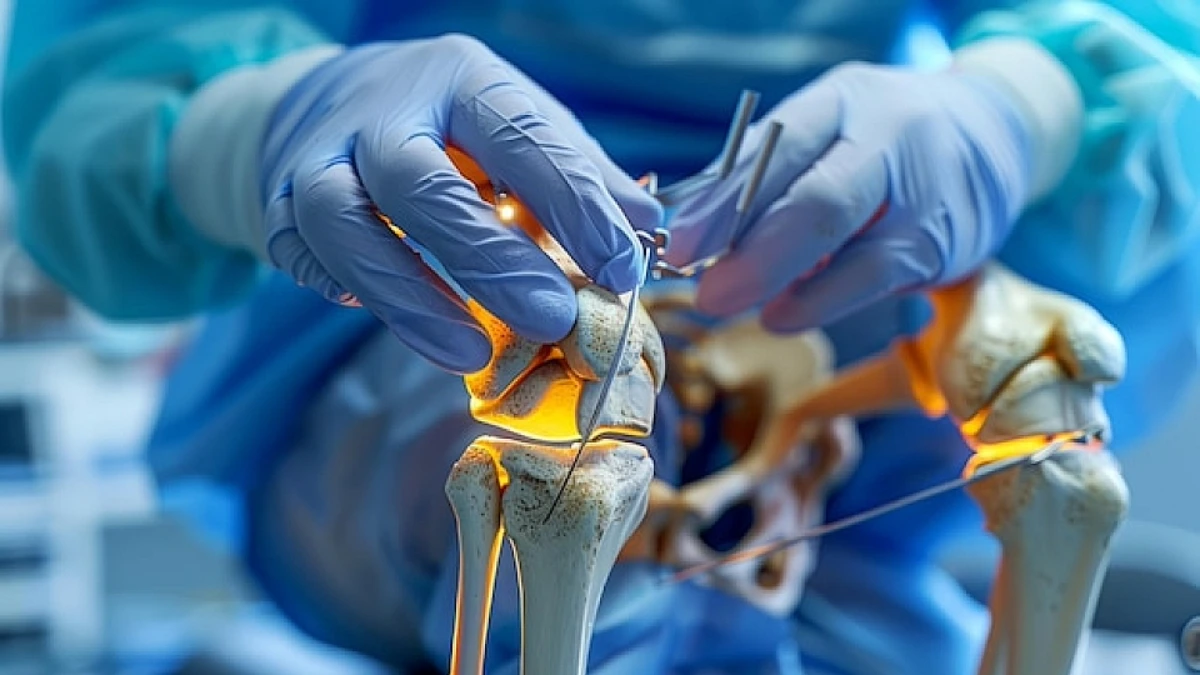
Knee Replacement Surgery Types
The two primary surgical procedures include:
Total Knee Replacement
It is replaced on both sides of the knee joint. Moreover, the majority are done on patients between the ages of 60 and 80.
Partial Knee Replacement
A minor procedure replaces just 1 side of the joint. Generally, it is performed on patients between the ages of 55 and 65.
What Causes Knee Disability
Arthritis is the most common reason for chronic pain in the knee. However, Osteoarthritis, rheumatoid arthritis, and post-traumatic arthritis are the most common types of knee discomfort.
Osteoarthritis
Age is the main factor in this type of arthritis. It mainly affects adults over the age of 50. The knee’s protecting cartilage deteriorates and softens with time. As a result, the continuous rubbing of the bones results in discomfort and pain in the knee.
Post-traumatic Arthritis
This may appear after a severe knee injury. The joint cartilage injury from knee ligament rips or fractures of the bones around the knee over time may result in pain and decreased knee function that can require knee replacement operation.
Rheumatoid Arthritis
In this illness, the synovial membrane that covers the joint thickens and becomes irritated. So, the inflammation can harm cartilage, leading to cartilage loss.
Suitable Candidates for the Knee Replacement Procedure
- It is advised to patients if alternative therapies, like physiotherapy or steroid injections, have not decreased pain.
- The patient’s knee joint is extremely painful, swollen, not flexible, and has limited movement.
- Knee pain is so serious that it affects sleep and life quality.
Before the Knee Replacement Surgery
First, an orthopaedic surgeon examination is required. The surgeon will evaluate the medical history and do a physical examination. After that, the patient will be asked for knee x-rays and other required tests.
The Knee Replacement Procedure
The surgery normally takes between 1 and 2 hours. The most common kinds of anaesthesia are general anaesthesia and spinal or regional nerve block anaesthesia. The anaesthesia experts will decide which form of anaesthesia is best for you. The thighbone, shinbone, and kneecap are taken away during the knee replacement surgery, and the damaged bone and cartilage are replaced with a prosthesis composed of metals, quality plastics, and polymeric materials. Then, to generate a smooth gliding surface, the surgeon puts a medical plastic spacer between the metal parts. The recovery rates for treating a variety of conditions have significantly risen with the advancement of robotic knee surgery applications.
After the Knee Replacement Procedure
The patient needs about 3 to 5 days of hospital stay after the knee replacement operation.
Some patients may stop using walking assistance six weeks following surgery, and they can start driving seven weeks later.
As scar tissue heals and the muscles improve via exercise, a full recovery may take up to two years as a result.
The patient should keep the area clean.
The recommended exercises should also be done.
Risks of Knee Replacement Procedure
Although they’re not common, knee replacement surgery can cause:
- Infection
- Pain
- A knee joint bleeding
- a bone fracture around the knee replacement
- Prosthesis loosening
- Leg or pulmonary blood clots







